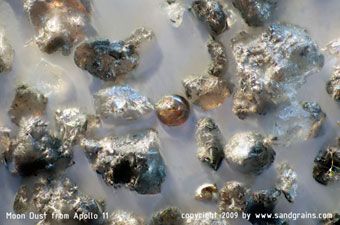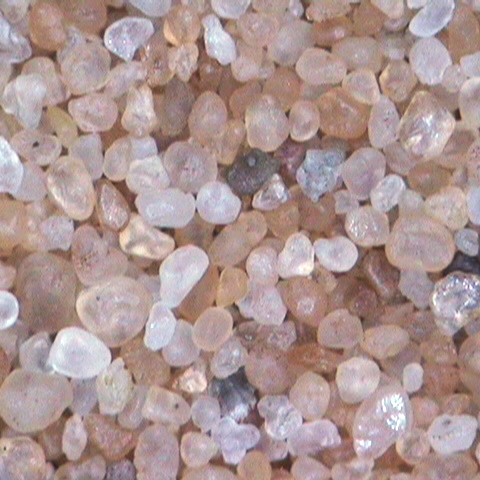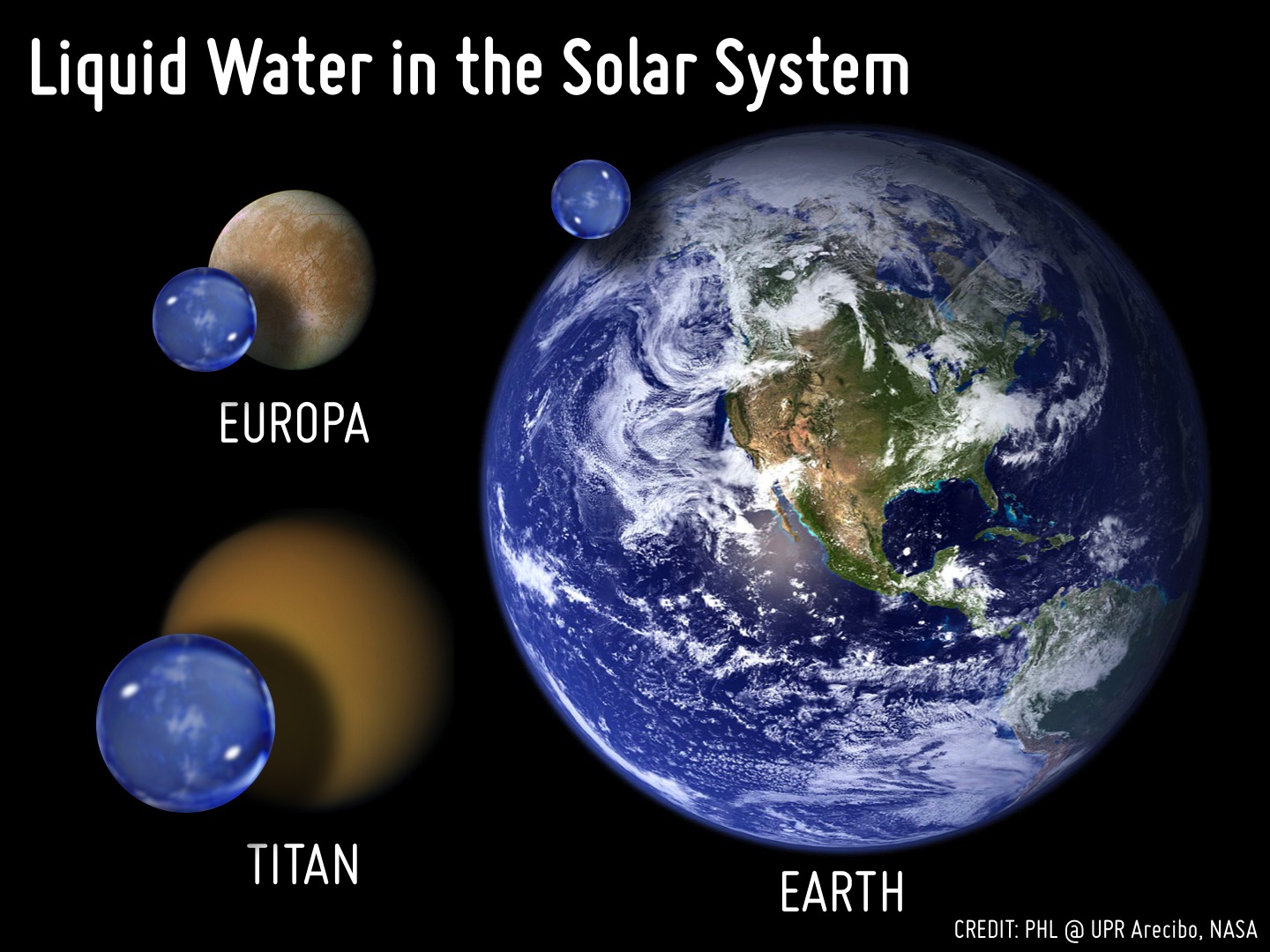It looks like you're using an Ad Blocker.
Please white-list or disable AboveTopSecret.com in your ad-blocking tool.
Thank you.
Some features of ATS will be disabled while you continue to use an ad-blocker.
share:
My question is about the sand....
Isn't sand created by water or wind abrading larger rocks; a by product of abrasion. What made the sand on that comet?
Thus the reason for my thinking that the comet might be a chip off the old planet block.
Isn't sand created by water or wind abrading larger rocks; a by product of abrasion. What made the sand on that comet?
Thus the reason for my thinking that the comet might be a chip off the old planet block.
edit on 25-1-2015 by olaru12 because: (no reason
given)
a reply to: olaru12
Did someone say it was sand? Did someone say it was rocky? More like snow than sand. But not exactly, because it doesn't come from the sky.
www.sciencemag.org...
Did someone say it was sand? Did someone say it was rocky? More like snow than sand. But not exactly, because it doesn't come from the sky.
One example, which may be partially buried by airfall, leading to an estimated thickness for the airfall of 1 to 5 m using standard scaling laws, has been identified (fig. S2).We expect that any ice chunks or particles larger than a few millimeters that are emitted from the source will not sublimate before falling back and could therefore form visually bright, highly localized ice deposits and sources of gas on these surfaces.
www.sciencemag.org...
edit on 1/25/2015 by Phage because: (no reason given)
originally posted by: olaru12
My question is about the sand....
Isn't sand created by water or wind abrading larger rocks; a by product of abrasion. What made the sand on that comet?
Thus the reason for my thinking that the comet might be a chip off the old planet block.

Dust, or sand, from the Moon. Very jagged, very abrasive the stuff wreaks havoc on EVA suits. Not at all like the smooth rounded can-walk-on-it-bare-foot type of sand we have on Earth.

Earth sand is shiny and polished and smooth and rounded because it exists in a continuous stream of currents and erosions called the biosphere.
originally posted by: Phage
a reply to: olaru12
Did someone say it was sand? Did someone say it was rocky? More like snow than sand. But not exactly, because it doesn't come from the sky.
One example, which may be partially buried by airfall, leading to an estimated thickness for the airfall of 1 to 5 m using standard scaling laws, has been identified (fig. S2).We expect that any ice chunks or particles larger than a few millimeters that are emitted from the source will not sublimate before falling back and could therefore form visually bright, highly localized ice deposits and sources of gas on these surfaces.
www.sciencemag.org...
From the link you provided....
High-resolution data show evidence of dunelike structures (fig. S3) that may be the result of aeolian-driven surface transport of the dust (13). Images acquired in the Hapi region of aeolian ripple structures, rocks with wind tails (fig. S4), and rocks with moats provide further support for localized gas-driven transport.
a reply to: olaru12
Uh huh. That's what it says. The rocks mentioned aren't stones. It's "consolidated cometary material."
Read the whole thing. Like I said, it's really interesting.
Uh huh. That's what it says. The rocks mentioned aren't stones. It's "consolidated cometary material."
Read the whole thing. Like I said, it's really interesting.
↵Although the morphology of many surfaces on 67P suggests a rock-like texture, we have avoided using that term here because of the expected very low density of the surfaces when compared to terrestrial rocks. We have adopted the term “consolidated cometary material” instead (CCM).
edit on 1/25/2015 by Phage because: (no reason given)
originally posted by: olaru12
originally posted by: Phage
a reply to: olaru12
Uh huh. That's what it says. The rocks mentioned aren't stones.
Read the whole thing. Like I said, it's really interesting.
Rocks aren't stones! What are they? Also snow? lol
Rocks here on Earth are normally made up of various minerals.
A "rock" on a comet may be made up of water ice, solid gasses and/or various organic compounds.
Because of the very low temps, it can just as solid as any rock here on Earth.
Take a look at the image of Titan's surface sent back by the Huygens probe. Looks like pebbles laying around there.
Only those pebbles? They're not minerals. They're ice.
There was a recent article about Venus, taking about a frost layer on the upper elevations of mountains on Venus.
The frost? It's not water. It's metal.
a reply to: lostbook
I tend to think that if life is "helped" to begin by extraterrestrial materials, it will tend to be more similar to that on Earth than different. We've found some of the most basic building blocks in space, building blocks that could conceivably lead to DNA. While DNA can yield an enormous level of variety, it's fascinating to think that extraterrestrial life may also be based upon that same molecule.
I tend to think that if life is "helped" to begin by extraterrestrial materials, it will tend to be more similar to that on Earth than different. We've found some of the most basic building blocks in space, building blocks that could conceivably lead to DNA. While DNA can yield an enormous level of variety, it's fascinating to think that extraterrestrial life may also be based upon that same molecule.
edit on 1/25/2015 by Phage because: (no reason given)
originally posted by: olaru12
originally posted by: Phage
a reply to: olaru12
Uh huh. That's what it says. The rocks mentioned aren't stones.
Read the whole thing. Like I said, it's really interesting.
Rocks aren't stones! What are they? Also snow? lol
Take Saturn's moon Titan for example. Rocks, sand, and even mountains there are made of ice rather than rock.
That said, the surface of this comet hardly has any ice. More likely, its surface is a combination of rocky rubble mantle and carbon-rich irradiation mantle.
originally posted by: GaryN
a reply to: teamcommander
Would you think these features could be caused my vibrations?
Yes, by way of ion acoustic waves, which have been found to be very strong on and around some comets.
I am way outside of my level of expertise here, and commonsense would tell me to stay out of a conversation where the only thing I have to contribute is food for the trolls, but here it goes.
What about sound? Can sound create movement on a comet? What about the interaction of objections related to their composition? What about movement outside of a vacuum, if strong enough?
originally posted by: wildespace
originally posted by: olaru12
originally posted by: Phage
a reply to: olaru12
Uh huh. That's what it says. The rocks mentioned aren't stones.
Read the whole thing. Like I said, it's really interesting.
Rocks aren't stones! What are they? Also snow? lol
Take Saturn's moon Titan for example. Rocks, sand, and even mountains there are made of ice rather than rock.
That said, the surface of this comet hardly has any ice. More likely, its surface is a combination of rocky rubble mantle and carbon-rich irradiation mantle.
Mountains of ice??? but not water ice, correct...?
originally posted by: eriktheawful
originally posted by: olaru12
originally posted by: Phage
a reply to: olaru12
Uh huh. That's what it says. The rocks mentioned aren't stones.
Read the whole thing. Like I said, it's really interesting.
Rocks aren't stones! What are they? Also snow? lol
Rocks here on Earth are normally made up of various minerals.
Metal Frost? Is that really possible? Whoa! head-spin!
A "rock" on a comet may be made up of water ice, solid gasses and/or various organic compounds.
Because of the very low temps, it can just as solid as any rock here on Earth.
Take a look at the image of Titan's surface sent back by the Huygens probe. Looks like pebbles laying around there.
Only those pebbles? They're not minerals. They're ice.
There was a recent article about Venus, taking about a frost layer on the upper elevations of mountains on Venus.
The frost? It's not water. It's metal.
Frost made of metal.......? Is that possible? Whoa.... spin!
edit on 26-1-2015 by lostbook because: word add
edit on
26-1-2015 by lostbook because: word change
originally posted by: Phage
a reply to: lostbook
I tend to think that if life is "helped" to begin by extraterrestrial materials, it will tend to be more similar to that on Earth than different. We've found some of the most basic building blocks in space, building blocks that could conceivably lead to DNA. While DNA can yield an enormous level of variety, it's fascinating to think that extraterrestrial life may also be based upon that same molecule.
I believe that Space itself is a living thing, and that "life" as we know it is a by-product of its biological processes. I think on a scale of living things we're smaller than a quark. The known Universe may only be an Organelle in a complete system, for example.
How else could you get living things-"life," if Space itself isn't alive?
edit on 26-1-2015 by lostbook because: word change
originally posted by: lostbook
originally posted by: wildespace
originally posted by: olaru12
originally posted by: Phage
a reply to: olaru12
Uh huh. That's what it says. The rocks mentioned aren't stones.
Read the whole thing. Like I said, it's really interesting.
Rocks aren't stones! What are they? Also snow? lol
Take Saturn's moon Titan for example. Rocks, sand, and even mountains there are made of ice rather than rock.
That said, the surface of this comet hardly has any ice. More likely, its surface is a combination of rocky rubble mantle and carbon-rich irradiation mantle.
Mountains of ice??? but not water ice, correct...?
It's water ice. Titan (along with Jupiter's moon Europa) has more water than all the Earth's oceans taken together.

edit on 26-1-2015 by wildespace because: (no reason given)
a reply to: NightSkyeB4Dawn
Ion acoustic waves are sound, not neccessarily at frequencies our ears can hear, but sound in a plasma can be from very low to very high, megahertz frequencies.
I don't see why not. Sound also may be responsible for the regular surface patterns seen on moon and planet surfaces, such as swirls/spirals with a fibonacci pattern.
Though they have not released info yest from the Langmuir probe experiment of Rosetta, some info is available from other comet observations.
Plasma wave observations at comet giacobini-zinner.
www.ncbi.nlm.nih.gov...
What about sound?
Ion acoustic waves are sound, not neccessarily at frequencies our ears can hear, but sound in a plasma can be from very low to very high, megahertz frequencies.
Can sound create movement on a comet?
I don't see why not. Sound also may be responsible for the regular surface patterns seen on moon and planet surfaces, such as swirls/spirals with a fibonacci pattern.
Though they have not released info yest from the Langmuir probe experiment of Rosetta, some info is available from other comet observations.
Plasma wave observations at comet giacobini-zinner.
www.ncbi.nlm.nih.gov...
new topics
-
Putin, Russia and the Great Architects of the Universe
ATS Skunk Works: 2 hours ago -
A Warning to America: 25 Ways the US is Being Destroyed
New World Order: 6 hours ago
top topics
-
President BIDEN's FBI Raided Donald Trump's Florida Home for OBAMA-NORTH KOREA Documents.
Political Conspiracies: 12 hours ago, 29 flags -
A Warning to America: 25 Ways the US is Being Destroyed
New World Order: 6 hours ago, 12 flags -
Las Vegas UFO Spotting Teen Traumatized by Demon Creature in Backyard
Aliens and UFOs: 17 hours ago, 7 flags -
Is AI Better Than the Hollywood Elite?
Movies: 14 hours ago, 3 flags -
Maestro Benedetto
Literature: 13 hours ago, 1 flags -
Putin, Russia and the Great Architects of the Universe
ATS Skunk Works: 2 hours ago, 1 flags
active topics
-
Hate makes for strange bedfellows
US Political Madness • 50 • : 19Bones79 -
Weinstein's conviction overturned
Mainstream News • 28 • : burritocat -
Sunak spinning the sickness figures
Other Current Events • 25 • : Ohanka -
Krystalnacht on today's most elite Universities?
Social Issues and Civil Unrest • 5 • : crayzeed -
University of Texas Instantly Shuts Down Anti Israel Protests
Education and Media • 272 • : burritocat -
Gaza Terrorists Attack US Humanitarian Pier During Construction
Middle East Issues • 40 • : WeMustCare -
Cats Used as Live Bait to Train Ferocious Pitbulls in Illegal NYC Dogfighting
Social Issues and Civil Unrest • 24 • : NoviceStoic4 -
A Warning to America: 25 Ways the US is Being Destroyed
New World Order • 13 • : 2025yuga -
Is AI Better Than the Hollywood Elite?
Movies • 19 • : GENERAL EYES -
ChatGPT Beatles songs about covid and masks
Science & Technology • 24 • : iaylyan
